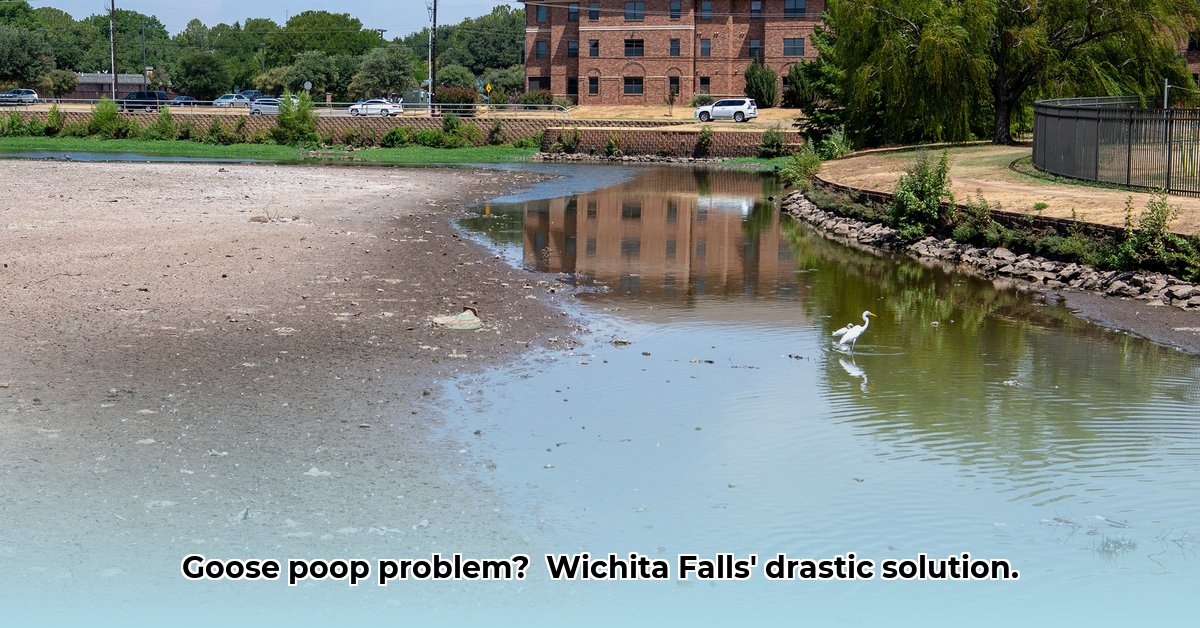
The Sikes Lake Goose Culling: A Controversial Decision and its Aftermath
The picturesque Sikes Lake on the Midwestern State University (MSU) campus in Wichita Falls, Texas, recently became the focal point of a heated debate surrounding wildlife management. The university's decision to humanely euthanize over 300 Canada geese sparked widespread controversy, raising critical questions about ethical considerations and the challenges of balancing environmental health with community concerns. This article delves into the complexities of the situation, examining the reasons behind the culling, the public reaction, and MSU's plans for future management.
The Problem: An Overabundance of Geese
A once-modest Canada goose population at Sikes Lake experienced a dramatic surge in recent years. This rapid increase stemmed from a confluence of factors: the absence of natural predators in the urban environment and the ready availability of food sources—likely from well-intentioned park visitors or landscaping—created ideal breeding conditions. The resulting overpopulation led to significant negative consequences. Goose droppings polluted the lake, impacting the ecosystem and posing potential public health risks, including the spread of Salmonella. Previous attempts to relocate geese proved ineffective, as adult geese tend to exhibit strong site fidelity, returning to their established nests. This situation necessitated a more decisive intervention.
The Controversial Solution: Humane Euthanasia
Facing escalating environmental and public health concerns, MSU, in collaboration with USDA Wildlife Services, opted for humane euthanasia of the excess geese. Carbon dioxide euthanasia, a method deemed humane by animal welfare experts and suitable for large-scale wildlife population control, was employed. All necessary permits were secured, emphasizing the university's compliance with regulations. However, this decision was far from universally accepted.
Public Reaction and Ethical Debate: Exploring Alternatives
The culling triggered a powerful public backlash. Many expressed ethical concerns, questioning whether lethal methods were the only viable option. Critics pointed to several potential non-lethal strategies, including habitat modification, employing deterrents (noisemakers, visual repellents), and targeted feeding restrictions. The heart of the debate centered on the ethical trade-off between addressing immediate environmental threats and preserving animal welfare. Some argued that the university should have prioritized, and more thoroughly explored, these alternatives before resorting to lethal control methods. Others highlighted a lack of prior public engagement in the planning process, further fueling the criticism. The central question: could this crisis have been avoided with a more proactive and community-inclusive strategy?
The University's Response and Future Plans: A Shift Towards Non-Lethal Control
In response to the public outcry and internal review, MSU announced a long-term strategy focused on non-lethal methods, primarily egg addling—a technique where goose eggs are treated to prevent hatching. This method is considered more humane and environmentally sound, but its long-term effectiveness remains to be seen. The university emphasized that rigorous monitoring and evaluation were crucial for determining the success of this approach and adapting if necessary. Furthermore, MSU pledged to increase community engagement and transparency in future wildlife management decisions.
Expert Perspectives: A Spectrum of Opinions
Wildlife biologists and conservationists expressed divergent views on the culling. Dr. Emily Carter, a wildlife biologist at Texas A&M University, stated: "While the intent may have been humane, the lack of thorough exploration of non-lethal options before resorting to culling is a serious concern." Conversely, Dr. David Miller, a wildlife management specialist at the University of Oklahoma, noted that "in situations where public health and environmental damage reach a critical threshold, lethal control may unfortunately be the most effective, even ethically troubling, solution." This range of expert opinions underscores the complex ethical dimensions of wildlife management.
Long-Term Implications and Lessons Learned: A Call for Proactive Management
The Sikes Lake incident highlights the need for proactive, data-driven urban wildlife management. This includes continuous population monitoring, early intervention strategies, significant community engagement, and adaptive management techniques. This case underscores that seemingly straightforward environmental issues can have far-reaching implications, demanding careful consideration of ethical dilemmas and public opinion. The ongoing debate serves as a vital lesson for other urban areas grappling with similar challenges. Open communication, collaborative planning processes, and a flexible approach that adapts to changing circumstances are essential components of successful wildlife management.
Key takeaways:
- The Sikes Lake goose culling exemplifies the complex challenges of urban wildlife management.
- The ethical considerations surrounding lethal vs. non-lethal control remain a central theme in the debate.
- Proactive planning, community involvement, and transparent communication are pivotal for effective and ethically sound management strategies.
- The long-term efficacy of non-lethal methods remains a critical area of ongoing research.